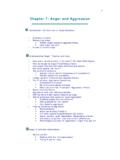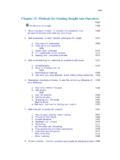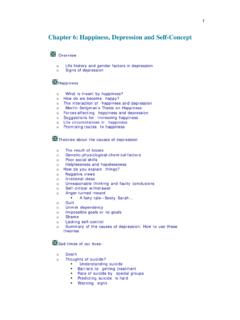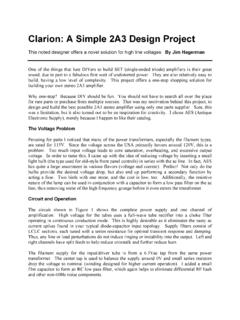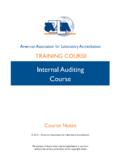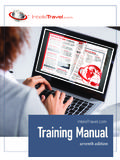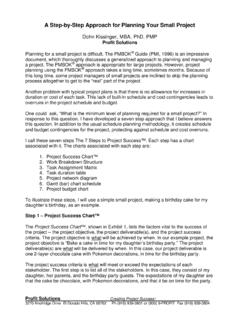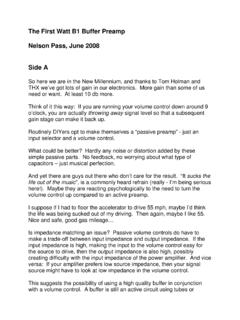Transcription of Methods for Changing Behaviors - Psychological …
1 1067 Chapter 11: Methods for Changing Behaviors Introduction 1068 Antecedent Methods --used prior to the "target" behavior : 1069 1. Change the environment to change your behavior 1069 2. Learn new behavior (using models, self-instructions) 1076 3. Using controlling or conditioned response 1082 4. Relapse prevention 1085 5. Motivation training--increasing our drive level 1089 6. Meet basic needs (so they won't get in the way) 1093 7. Recognize your motives and defense mechanisms 1095 Techniques Used During-the- behavior : 1097 8. Record behavior --self-monitor and check your progress 1097 9. Record antecedents & consequences; behavioral analysis 1101 10.
2 Disrupt the unwanted habit; thought stopping 1105 11. Substitute new behavior to break a bad habit 1108 12. Satiate behavior or flooding; paradoxical intention 1111 13. Change defeatist attitude; quieting the internal critic; flow 1113 14. Develop positive expectations; building self-efficacy 1118 15. Increase intrinsic satisfaction in the activity 1120 Consequence Methods --applied after the "target" behavior has 1123 occurred: 16. Reward the desired behavior --a powerful method 1123 17. Negative reinforcement--an important concept for insight 1137 18. Self-punishment 1142 19. Covert conditioning, punishment, and rewards 1147 20. Extinction (no reinforcement) 1151 If you don't know which Methods to start with, try Methods #1, #2, and #16 first.
3 They are useful in almost any situation. Introduction Consider a few of these Methods for your self-improvement project--the first section of each method will give you a simple 1068 introduction to the procedure. You only need one or two Methods to start with. For basic information about Changing your behavior , it is best to start with chapters 2 and 4. Chapter 2 outlines the steps in any self-help project. Chapter 4 helps us understand our behavior and thoughts. It introduces the basic learning and motivational concepts, upon which the Methods described here are based. This chapter provides straight-forward, detailed instructions for 20 behavior - Changing Methods . More complex treatment plans for problems are given in chapters 3 to 10; this chapter only deals with level I of the problem, the overt behavior and simple thoughts.
4 As discussed in chapter 2, much has to be done before you are ready to work on developing a self-help plan. For example, you must accept and become aware--highly conscious--of your problem. You must definitely decide to change and get motivated to do the work involved in Changing . As Prochaska, Norcross, and DiClemente (1994) have shown, if you aren't ready to launch into a self-change project, you must start in the stage you are at ( facing the problem and/or learning enough about it and its consequences that you are determined to change). When you are exploring specific ways to make the changes in your life you want to make, it is time to skim these Methods . If three or four seem of possible interest, read them in more detail and select one or two for your plan.
5 Don't forget the other four parts of your problem (see chapter 2). If you don't know which Methods to start with, try Methods #1, #2, and #16 first. They are useful in almost any situation. A combination of self-help behavioral Methods is often the most effective approach you can take. For instance, a popular writer, Anthony Robbins (1991), suggests first getting motivated to change by associating as much pain as possible with the unwanted behavior or with not Changing . At the same time, associate as much pleasure or rewards as possible with Changing , with the new desired behavior or lifestyle ( Methods #5, #13, #14, #16 & #18 and see chapter 14). This emphasizes that when you need to stop or disrupt the old unwanted pattern of behavior ( Methods #10, #11 & #12), you must be sure to develop new desirable ways of getting the same pay offs as were provided by the old unwanted Behaviors (method #2).
6 The new behavior must be practiced and reinforced strongly (method #16 again) until it is well entrenched as a habit. This motivate-and-reinforce-a-new- behavior plan usually works, but if it doesn't, you need an individualized plan. Just as important as the scientific basis of your self-change plan is the do-ability of your plan; an intellectually impressive treatment plan is worthless if it isn't used. The to-be-learned behavior needs to fit in with the rest of your life; it needs to be simple enough to do routinely; it needs to be something you can learn to enjoy. Within each of the following descriptions of behavior -change Methods , the basic idea is first described, then possible uses are listed, 1069 but the "meat" of this chapter is in the detailed, explicit steps for applying the method in your life.
7 There are also brief discussions of the time and common problems involved in using the method, as well as a cursory assessment of the effectiveness of the method and the risks involved. Each method is outlined in the same way. Useful references are cited at the end of most Methods . Much of the practical information about using each method comes from the experiences of my 3,000 students who attempted to make some important change in their life. Antecedent Methods : Self-Help Methods Used Prior to the Target behavior Change the environment to change your behavior The environment has a powerful influence on subsequent behavior . Many of our responses are automatic: we drive with effortless attention to the road and lights, we take notes in class without thinking about how to write (or what was said, sometimes).
8 In the long run the frequency of these Behaviors may depend on the consequences (the payoffs for driving or writing), but at any one moment it is primarily the stimuli in the environment that control our behavior . Some stimuli are compelling: a ringing telephone! Can you let it ring? Other such stimuli are an attractive person going by, someone talking about us, messages or sounds of alarm, and so on. All of us have habits that occur at certain times and places--we brush our teeth every morning before showering, watch the evening news during supper, etc., etc. Environmental and internal stimuli set off these habitual responses. In classical conditioning, stimuli produce an immediate response. For example, Schachter (1971) demonstrated that obese people respond to external cues, such as the sight or smell of food or any reminder that "it's lunch time," rather than to internal messages from an empty stomach.
9 The best way to avoid overeating is to avoid food or any reminder of food. Likewise, for any other temptation! "Out of sight, out of mind." In operant conditioning, the environment guides our behavior by providing cues about the probable payoffs. For example, when initially interacting with an attractive person of the opposite sex, most of us are keenly aware of how they are responding to us; we look for signs that they are interested in, amused by, or attracted to us. We adjust 1070 our behavior , becoming more "friendly" or pulling away, according to how we read their signals. Likewise, we are using antecedent cues any time we are observing the situation and trying to figure out "what to do" (which means trying to predict what the consequences will be).
10 As self-helpers we are able to alter the consequences somewhat by providing special rewards and punishment--and we can alter our view of the consequences, emphasizing important values and long-range goals which might otherwise be overlooked. In modeling, we learn specific ways of behaving in certain situations or what the consequences are likely to be if we act a certain way in a situation. Again, the environment is influencing our actions. It is said "the road to hell is paved with good intentions," meaning that announced intentions are often useless and not believed. The bad reputation of intentions is not entirely deserved. Science shows that intentions are somewhat related to later behavior , but only modestly (Gollwitzer, 1999).

